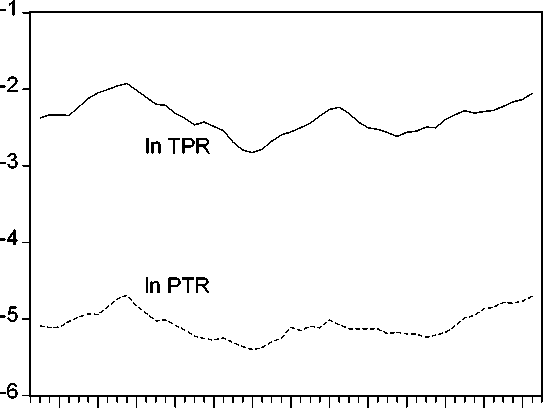14
Figure 3.4. Transitions between temporary and permanent employment (log transition rates).

88 89 90 91 92 93 94 95 96 97 98 99 00
Panel B in Figure 3.5 reveals strong cyclical patterns in exits from employment to
unemployment but much weaker (or nonexistent) cyclicality in exits to nonparticipation. It is
noteworthy that the relative increase in exit rates to unemployment is larger among workers on
open-ended contracts than among those on fixed-term contracts; the rise in PUR from boom to
slump (580 percent) is larger than the increase in TUR (380 percent) during the same period.
In summary, our ocular inspections of transition rates reveal pronounced pro-cyclical
transition rates from both unemployment and nonparticipation to permanent and temporary
employment. Separation rates involving unemployment are strongly counter-cyclical, whereas
there appears to be negligible cyclicality in transition rates from employment to nonparticipation.
We proceed to a more formal analysis of these transition rates and their implications for the
cyclical behaviour of stocks and flows.
More intriguing information
1. Skill and work experience in the European knowledge economy2. Endogenous Heterogeneity in Strategic Models: Symmetry-breaking via Strategic Substitutes and Nonconcavities
3. The name is absent
4. The name is absent
5. The name is absent
6. The name is absent
7. Midwest prospects and the new economy
8. FDI Implications of Recent European Court of Justice Decision on Corporation Tax Matters
9. A novel selective 11b-hydroxysteroid dehydrogenase type 1 inhibitor prevents human adipogenesis
10. Reversal of Fortune: Macroeconomic Policy, International Finance, and Banking in Japan